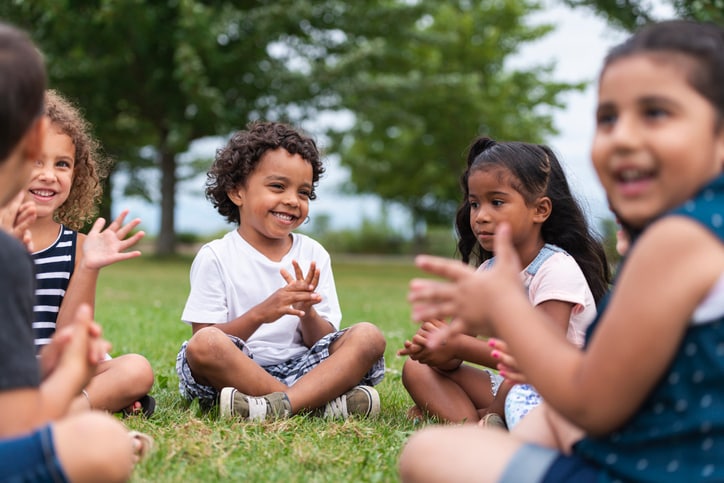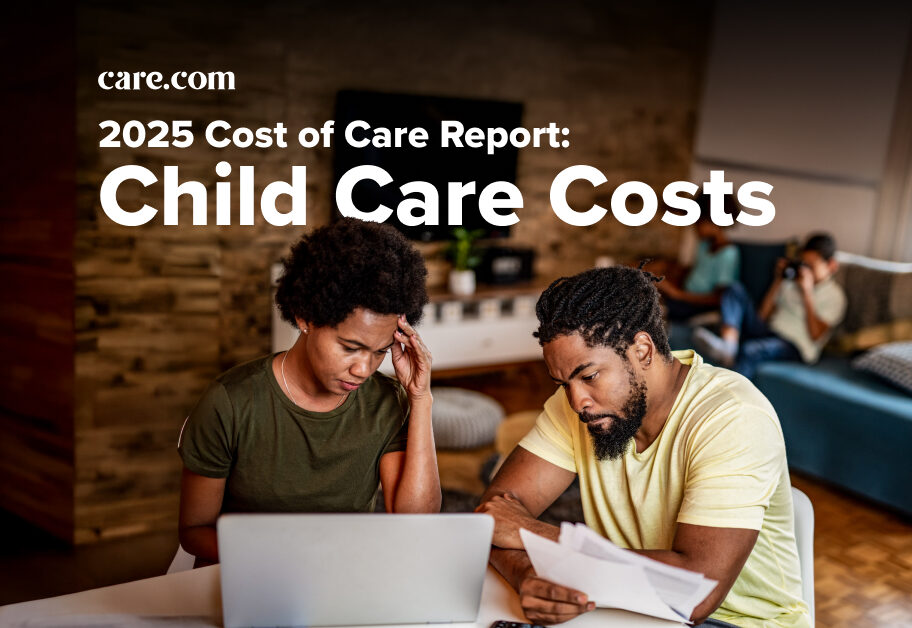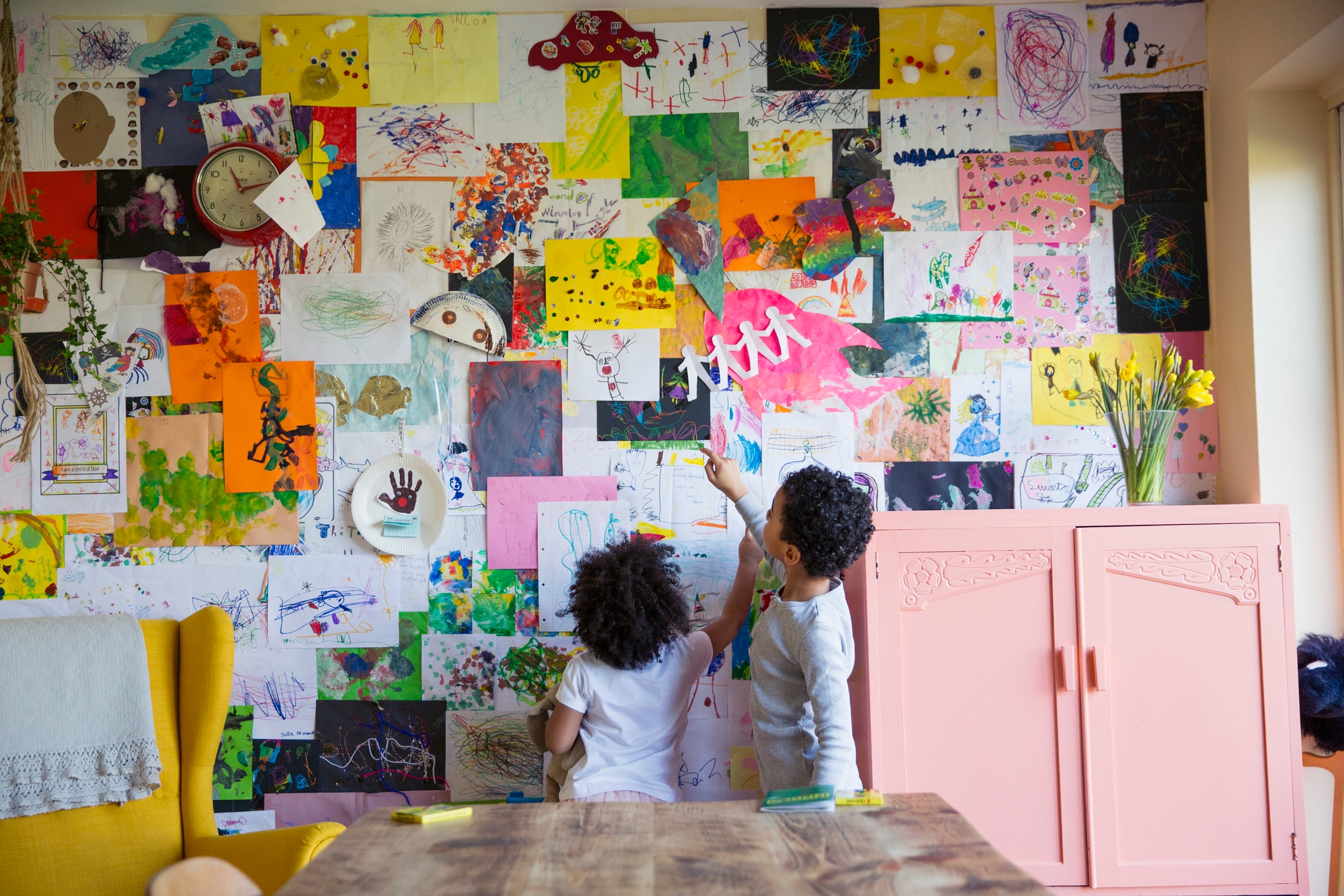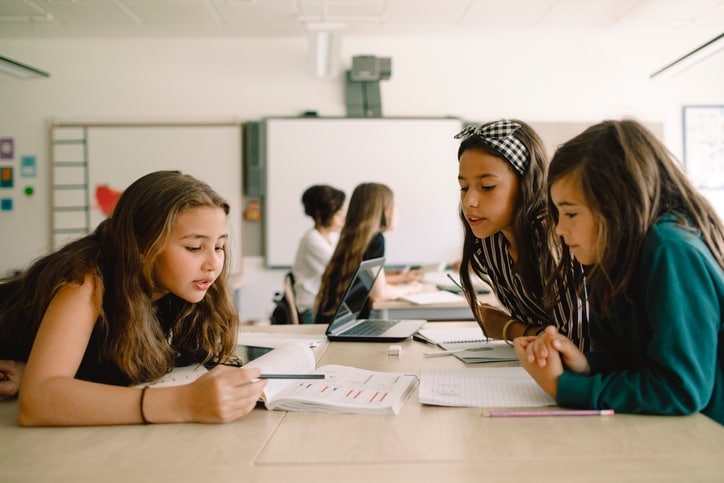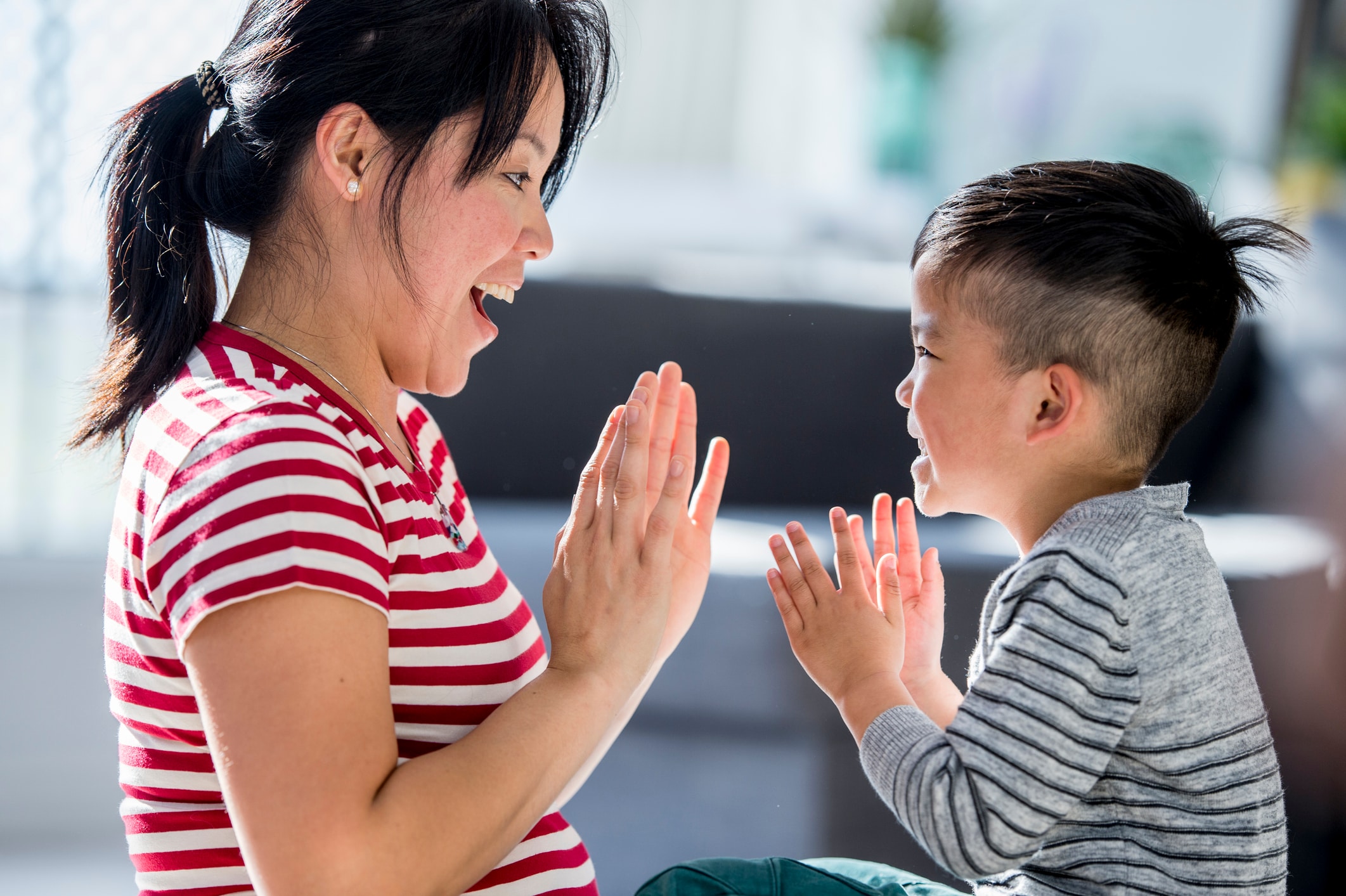Knowing how rapidly the brain develops in early childhood, parents understandably put a lot of stock in finding the best preschool for their child. A first learning environment can be structured in various ways, and one way that is growing in popularity is the Reggio Emilia approach in which children are empowered to self-direct their own learning through play.
“In a Reggio Emilia learning environment, children are able to explore, [in order] to construct their own experiences, build upon those experiences and discover new things in their own way,” says Diane Fletcher, director of the Reggio-inspired Early School at Ashley Hall in Charleston, South Carolina. The approach is focused on encouraging kids to take risks and engage in critical thinking — even at 2 or 3 years old — because these experiences will positively influence their personalities as adults, explains Fletcher.
So how exactly does the Reggio Emilia approach to learning play out in the classroom? Here, experts explain the core principles of this educational philosophy, plus how it compares to others so parents can choose the right preschool for their child.
What is the Reggio Emilia approach?
The Reggio Emilia approach employs a child-led approach to learning, as opposed to teacher-led, according to Stacey Duchak, a school placement advisor with Evolved Education who works with students in nursery school through high school. This means teachers create projects based around student interests. As a result, Reggio-inspired classrooms may focus on different topics throughout the year.
One of the biggest benefits of the Reggio Emilia approach, Duchak notes, is the fluid curriculum. “It is based on student interest, which sparks the attention of young students,” she says. “Additionally, students are given more agency at this young age, which can boost confidence and self-motivation later in their learning career.”
Origin of the Reggio Emilia approach
Quick history lesson: In the 1950s, Italian teacher and psychologist Loris Malaguzzi founded a center for children with disabilities and learning difficulties. There, he experimented with new early childhood teaching methods to help develop their motor skills and languages of expression. By the 1960s, his work had become so highly regarded that he was asked by the local government to shape a method of teaching to be adopted by all preschools in the town of Reggio Emilia, Italy. This method would become known as the Reggio Emilia approach.
Today, “true” Reggio Emilia schools are only located in Italy because Reggio Children, the official international organization which promotes the approach, defines their schools based on their location. But there are Reggio-inspired schools, which use Malaguzzi’s same child-led learning method for ages 2-5, located all around the world.
Today, there are more than 1,200 Reggio-inspired preschools in the United States, according to We Are Teachers, a website that connects a community of 3 million educators around the country to share resources and ideas. That number continues to grow, as tracked by the North American Reggio Emilia Alliance which works with Reggio-inspired schools in nearly 40 states.
How the Reggio Emilia approach compares to Montessori
Dr. Maria Montessori, the educator who developed the Montessori Method, also believed in a child-led learning environment, so there are similarities between Reggio-inspired schools and Montessori schools. However, there are a few key differences, with the biggest being the curriculum.
The curriculum in Montessori schools details a sequence through which children will learn certain skills. For example, a student in a Montessori school will first learn the alphabet, then how to write letters, then how to read. In Reggio, however, there is no such set sequence because the belief is that children can acquire different skills at different times and in their own ways.
How students work together also differs in a Reggio Emilia versus Montessori school, according to Duchak. Reggio-inspired classrooms tend to be grouped by age, because students of the same age will likely share common interests, which can help drive both the curriculum and collaboration on projects. Montessori classrooms, on the other hand, may contain mixed age groups and are more focused on individual learning.
“Mixed-aged classrooms are successful in Montessori schools because students learn from each other,” Duchak says. “Younger students often look up to the told students and will mimic or try what their older peers are doing.” This allows for not only group learning, but also independent learning, which is also more common in Montessori classrooms than Reggio. For example, a Montessori classroom is set up so children can explore different topics that interest them in different areas of the classroom on their own, while a Reggio classroom encourages children to explore new topics together through discussion and negotiation, explains Duchak.
Reggio Emilia methodology
If you have only had experience with traditional preschools, the Reggio Emilia approach may sound a bit intimidating to understand at first. But it’s actually based on simple principles. Here are a few of the most important Reggio Emilia principles and how they play out in a Reggio-inspired preschool classroom.
Children construct their own lessons and teachers facilitate
In a Reggio-inspired preschool, teachers listen to what children are interested in and create theme-based units, explains Duchak. For example, a child’s question of “How does this butterfly fly?” may prompt a teacher to create a project that allows students to create their own thing that flies. “Therefore students will ‘construct’ their own knowledge through hands-on exploration and expression,” she says.
Since it’s child-led, learning about a topic in a Reggio-inspired classroom doesn’t end after a set amount of time. “Time is slowed down to create space for children to really explore, test and engage in a hands-on way,” says Andrea Sisbarro, director at Boulder Journey School, a private Reggio-inspired school in Boulder, Colorado for students ages from 8 weeks to 5 years. “Some experiences might take place over the course of a week, others might be appropriate only for one day before modifications are made.”
“Children who thrive in the Reggio Emilia classroom are independent learners who are naturally curious and enjoy finding more about the world around them. They thrive on free play and don’t require a structured day to remain engaged and happy.”
— Stacey Duchak, a school placement advisor with Evolved Education
For parents and children who prefer more structure, this is one of the stickiest points to consider with a Reggio-inspired school. “While the Reggio approach has many benefits, it may not provide enough structure for students,” Duchak says. “Some students function and learn best with a more teacher-led approach and with less fluidity in their school day. In addition, the lack of a prescribed curriculum may leave less teacher accountability, and students may encounter different experiences year to year within a given class.”
With this in mind, parents are encouraged to consider how their own child learns best when considering Reggio. “Children who thrive in the Reggio Emilia classroom are independent learners who are naturally curious and enjoy finding more about the world around them,” says Duchak. “They thrive on free play and don’t require a structured day to remain engaged and happy.” On the flipside, if your child is more likely to stay engaged when they are guided into one activity or another, they may not do well in a Reggio classroom where teachers do not determine how they will spend their time.
Children are encouraged to express themselves in many ways
According to Reggio Children, a key principle of this learning philosophy is the belief that “children possess a hundred languages: a hundred ways of thinking, expressing, understanding, of encountering otherness through a way of thinking that weaves together and does not separate the various dimensions of experience.”
“As part of the focus on ‘hundreds of languages,’ children in Reggio classrooms are encouraged to express themselves in a multitude of ways, through their emotions, play, creating art, science, movement and more,” Duchak explains. “Children have agency even at a young age and should be listened to and encouraged.”
The agency given to every student in a Reggio-inspired program is another key part of this principle. “Children are equipped with extraordinary potentials for learning that are made manifest in an unceasing exchange with the cultural and social context,” according to Reggio Children.
Fletcher elaborates, “Children aren’t objects. Their minds are very different [from one another]. They all have different personalities, different traits, different strengths, different weaknesses. So we really work in a Reggio environment to develop the identity of a learner rather than dictate to them how they should learn and honor every child.”
The environment serves an important purpose
“In Reggio classrooms, the environment itself is referred to as the ‘third teacher,’ meaning it is developmentally appropriate for young children and set up in such a way that students are able to work collaboratively,” explains Duchak.
The atelier, which can be thought of as a workshop or a studio, is an integral part of a Reggio Emilia school, says Wendy Robbins, an artist and educator who serves as the atelierista, or an art teacher, for children ages 2-5 in Ashley Hall’s Reggio-inspired preschool led by Fletcher.
“Malaguzzi designed the atelier as a laboratory for thinking — a place where children could come and realize ideas, work through theories, test things out, make representations of their ideas through their hundred languages,” explains Robbins, who has studied Reggio for 19 years and taught for 25.
Robbins’ space at Ashley Hall resembles an art classroom that students visit every day, but there are no preset lessons in store when children walk through the door. Instead, she has set up her space to allow children to lead their own lessons.
“When thinking of the environment as the third teacher, it’s about being intentional about what you present to the children,” Robbins says. “Everything should be meaningful to the child. So I don’t want to just put something out just to put something out; it must serve a purpose: either to invite them to explore something or to provoke a new thought and challenge them to think more deeply.”
Academic documentation is essential to make learning visible
Documentation of learning is an important part of the Reggio Emilia approach, but it looks different than it would in a traditional preschool since there are not set learning targets for children. “Academic expectations are based more on skills rather than a set of pre-set standards,” Duchak says. “For example, students’ fine motor skills are not assessed on their ability to write the alphabet but how they use the materials around them.”
With this in mind, documentation of learning comes from observation. “This approach is based on listening,” Sisbarro says. “The teachers observe and document the children at play and analyze their notes, photos and/or videos to create next steps for learning.”
Even through play, children are working on their critical thinking skills, says Robbins. “They are learning literacy, they are learning math skills, but it’s all through their experiences and their work through play that they’re naturally getting those skills,” she says.
“I knew the importance of play at that age and how much they can learn through play that they really can’t learn by sitting at a desk.”
— Kate D., a mom of a kindergartener who attended a Reggio-inspired preschool for three years
This emphasis on play is what drew Kate D., a mom of a kindergartener who attended a Reggio-inspired preschool for three years, to the approach. “I knew the importance of play at that age and how much they can learn through play that they really can’t learn by sitting at a desk,” she says. “When she was encouraged to follow her own interests rather than being told to do a specific thing, she naturally was more engaged and excited to learn.”
Lastly, experts emphasize the importance of parent collaboration when it comes to observing and tracking what a child is learning. “Through the documentation process, parents are able to see and understand the progression of their child’s learning,” Duchak says. “Parents also can forge connections between topics explored at school and the outside world.”
The bottom line on the Reggio Emilia approach
If your child thrives on free play and doesn’t require a structured day to remain engaged, they may be a candidate for a Reggio-inspired preschool. Duchak has found that these schools are a fit for both children who are independent learners and parents who aren’t worried about strict schedules or traditional learning targets at the preschool age.
Now that her daughter has moved into kindergarten, Kate has been able to reflect on her experience in a Reggio-inspired learning environment. “They develop a strong sense of curiosity and communication that they can then use as they move on and sometimes out of a Reggio-inspired program,” she notes.
If you’re interested in finding a Reggio-inspired school near you, check out these organizations listed by state who are members of the North American Reggio Emilia Alliance.
